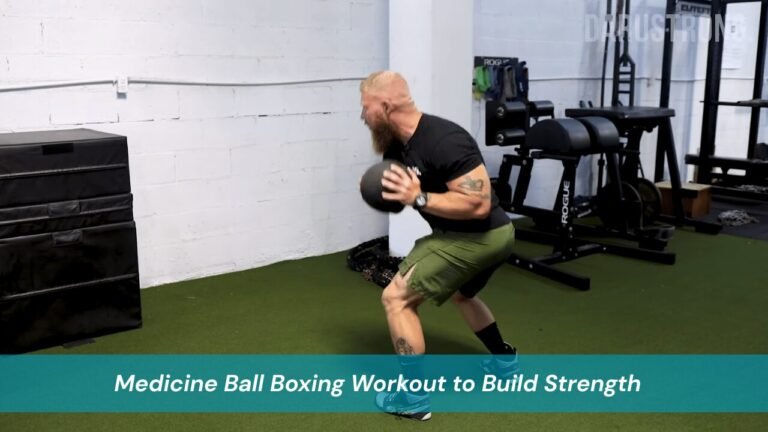Physical therapy is one of the most effective non-invasive treatments for pain management, injury recovery, and mobility improvement. Whether you are recovering from a sports injury, coping with a chronic condition, or aiming to regain movement after surgery, physical therapy offers evidence-based and personalized care.
This in-depth guide explains what physical therapy is, how it works, the conditions it treats, techniques used by therapists, and how to get started. It is designed to help you make informed decisions and understand the real value of physical therapy in your wellness journey.
What Is Physical Therapy?
Physical therapy, often referred to as PT, is a healthcare discipline focused on the evaluation, diagnosis, and treatment of physical impairments, disabilities, or pain. It is performed by trained professionals known as physical therapists who use a combination of hands-on treatment, therapeutic exercises, and patient education.
PT addresses a wide range of concerns including joint and muscle pain, balance problems, post-surgery recovery, and even neurological and cardiopulmonary disorders. Its holistic approach aims not only to treat the existing condition but also to enhance overall functional ability.
How Does Physical Therapy Work?
The process begins with a comprehensive evaluation of your condition. This assessment includes a review of your medical history, current symptoms, mobility, strength, and functional limitations. Based on this, the physical therapist designs a treatment plan with specific goals, targeted exercises, and appropriate treatment modalities.
A crucial aspect of PT is patient education. Therapists teach individuals how to prevent future injuries through lifestyle modifications, posture correction, and home exercise routines. Progress is carefully monitored and documented, allowing adjustments to the treatment plan as needed.
Common Conditions Treated by Physical Therapy
Physical therapy is effective for a variety of medical conditions ranging from lower back pain and neck stiffness to sports injuries and post-surgical rehabilitation. It is also a key component in recovery from strokes, arthritis, sciatica, and balance disorders, as well as certain cardiopulmonary conditions.
Pediatric patients with developmental delays or conditions like cerebral palsy can benefit from PT to improve movement and function. Early intervention has been shown to improve recovery outcomes and reduce the need for more invasive treatments.
Types of Physical Therapy
Orthopedic physical therapy focuses on musculoskeletal problems, such as joint pain, ligament injuries, and rehabilitation after orthopedic surgeries. Neurological physical therapy is tailored for individuals with conditions like stroke, Parkinson’s disease, brain injuries, or spinal cord injuries.
Cardiopulmonary physical therapy aims to enhance cardiovascular and respiratory endurance for those recovering from cardiac events or lung diseases. Geriatric physical therapy supports elderly patients dealing with age-related conditions such as osteoporosis, arthritis, and fall risk. Pediatric physical therapy assists children with mobility and motor function issues, while sports physical therapy helps athletes recover from injuries and improve performance.
Treatment Techniques Used in Physical Therapy
Physical therapists use a range of techniques depending on a patient’s needs. Manual therapy includes methods such as joint mobilization, manipulation, and soft tissue massage. Therapeutic exercises are prescribed to enhance strength, flexibility, and balance.
Other methods include posture training, neuromuscular re-education, ultrasound therapy for inflammation reduction, electrical stimulation to ease pain, and cold or heat therapy to improve circulation and healing. Each approach is chosen after a detailed clinical evaluation to ensure it aligns with the patient’s goals.
Benefits of Physical Therapy
One of the most significant benefits of PT is pain relief without the reliance on medication, particularly opioids. By addressing the root cause of discomfort, it offers a safer long-term solution.
Physical therapy can also help patients avoid surgery altogether by strengthening muscles, improving joint function, and restoring mobility. For those who have undergone surgery, it speeds up recovery, reduces stiffness, and prevents complications like scar tissue formation. PT also improves flexibility, aids sports injury recovery, and supports the management of chronic conditions like arthritis or diabetes.
Physical Therapy vs Other Treatments
Compared to medication, physical therapy is movement-based and non-invasive, with fewer risks. While medication may mask symptoms, PT addresses the root cause of the issue. Surgery can be effective but comes with higher costs, greater risks, and longer recovery times.
Physical therapy typically involves moderate ongoing costs and spans weeks to months, while medication use is continuous and surgery is a single but significant intervention. This makes PT an appealing first-line option for many conditions.
The Role of the Physical Therapist
Physical therapists are highly trained professionals, often holding a Doctor of Physical Therapy (DPT) degree, and are licensed to practice in their respective regions. Many also undergo specialized training in areas such as orthopedics, neurology, geriatrics, or sports medicine.
Their responsibilities include conducting physical exams, designing personalized rehabilitation plans, monitoring patient progress, providing injury prevention education, and working closely with physicians and other healthcare providers to ensure optimal care.
What Happens in a Typical Physical Therapy Session?
Your first session usually starts with an initial consultation where the therapist evaluates your health history, current symptoms, movement range, and strength levels. This forms the basis for setting realistic and personalized goals.
Following this, a therapy plan is developed, outlining the frequency of visits, specific exercises, and expected milestones. Treatment sessions involve supervised exercises, manual therapy, and educational guidance, along with home exercises to support ongoing improvement. Regular evaluations track your progress, allowing for necessary adjustments.
How to Choose the Right Physical Therapist
Selecting the right therapist can make a significant difference in recovery outcomes. It is important to verify credentials and licensing, ensure the therapist has experience with your specific condition, and consider factors like clinic location, operating hours, and patient reviews.
You should also check insurance coverage and payment options while making sure you feel comfortable communicating with the therapist. A well-equipped clinic that follows proper hygiene and safety protocols can further enhance your treatment experience.
Addressing Common Misconceptions About Physical Therapy
A common myth is that PT is only for injuries, but in reality, it also helps prevent problems, manage chronic diseases, and correct posture. Some believe therapy is painful, but while mild discomfort can occur, proper techniques aim to minimize it.
It is also untrue that young people don’t need PT active individuals can benefit after sports injuries or to address postural issues from sedentary lifestyles. Finally, while home workouts are valuable, they cannot replace the expertise and customized care of a licensed physical therapist.
FAQs
What is the main goal of physical therapy?
The main goal is to help individuals regain functional mobility, reduce pain, and improve their overall quality of life through safe and effective movement strategies.
How often should I attend physical therapy sessions?
The frequency depends on your condition. Most people attend two to three sessions per week initially. The schedule is adjusted based on your progress.
Can I continue physical therapy exercises at home?
Yes, therapists usually provide home exercise plans. However, correct technique and supervision are crucial, especially in the early stages.
How long will physical therapy take to show results?
Improvement timelines vary based on the condition. Some patients see results in a few weeks, while others require months for full recovery.
Is physical therapy expensive?
Costs vary, but many insurance plans cover physical therapy. Without insurance, sessions may range from $50 to $350. Check with your provider for exact coverage.
Conclusion
Physical therapy is not just a temporary fix it’s a life-changing solution for people living with pain, disability, or limited mobility. It addresses root causes, helps patients avoid surgery, and promotes lasting recovery through education and active participation.
From professional athletes to elderly individuals and office workers, physical therapy offers tailored care for every lifestyle. If you’re experiencing pain, movement difficulty, or recovering from surgery, consulting a licensed physical therapist can be the first step toward recovery. Make informed choices, take control of your physical health, and consider physical therapy as a foundational component of your wellness plan.




